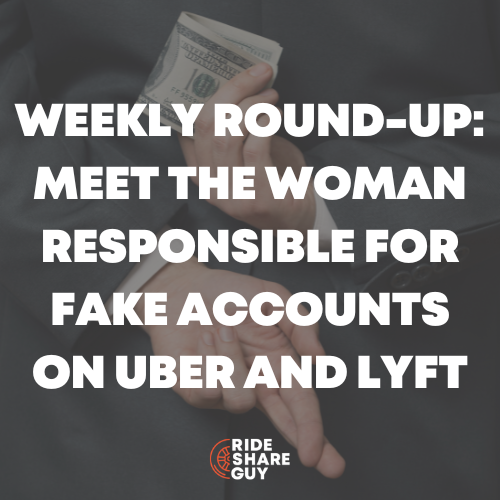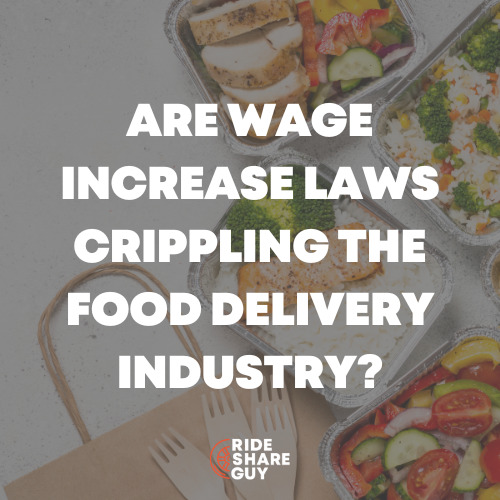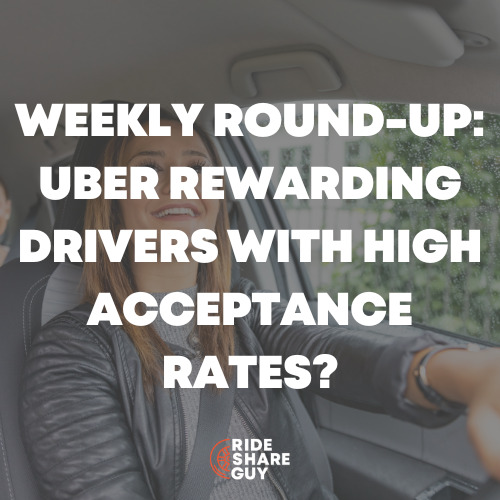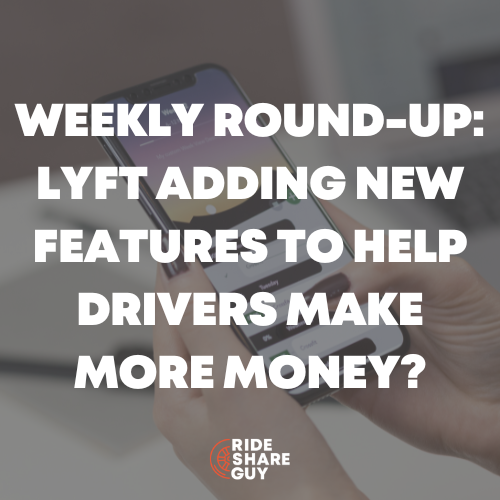Expansions and cutbacks are happening in the world of rideshare this week. Does this signal a recession vibe or just a pivot to remain vital? Find out in this week’s roundup with senior RSG contributor Paula Lemar.
Uber updates grocery delivery service with after-hours ordering and more (CNBC)
Summary: Uber announced the most comprehensive update to its grocery delivery service on Thursday since its initial launch in 2020, introducing a series of new features that aim to make the experience more convenient for consumers and merchant partners.
As the changes roll out across the U.S. this summer, users will be able to place orders from grocery stores after hours, schedule deliveries, track their orders from store shelves to their homes, select product replacements and shop for items by weight.
Oskar Hjertonsson, global head of Uber’s grocery and new verticals business, said Uber “is betting in a huge way on grocery” and that he believes the company is in “a great position to build a great grocery business.”
Uber launched grocery delivery two years ago, and the company has since acquired the Latin America-based grocery delivery platform Cornershop and added more than 24,000 grocery stores around the globe….
My Take: Pivoting. Uber seems to be constantly pivoting, trying to remain relevant and competitive. But perhaps they should find the main focus again and get that perfected. Drivers are frustrated with changes to everything except for pay increases, which is what drivers actually want from this platform.
On RSG’s Facebook page, Mark J. stated, “Why deliver for them when you can deliver for Walmart for much better pay. Walmart can pay much better because they don’t need to make money on deliveries and Uber does. Walmart knows how to treat drivers right and Uber doesn’t.”
If platforms like Uber are going to continue trying to make it in the delivery world, where they didn’t start in the first place, they need to do it better than the other delivery companies out there.
The article says that Uber “is betting in a huge way on grocery,” but they’re coming into it at a difficult time, in my opinion. Uber is not synonymous with grocery delivery. Even Uber Eats doesn’t bring groceries to mind. If I want to order groceries online, my first instinct is to either order directly from the store (many grocery stores have some kind of delivery service now) or use a service like Instacart. Uber is probably 4th or 5th on my list of apps I’d consider using for groceries.
Before they will thrive (if they will thrive) in grocery delivery, Uber needs to turn that division into the best option and change the minds of millions of consumers to believe the same.
Lyft Lays Off About 60 Employees, Folds Its Car Rentals for Riders (Wall Street Journal)
Summary: Lyft Inc. has shed about 60 people while hitting the brakes on renting its cars to riders and consolidating its global operations team, according to people familiar with the matter and an employee memo reviewed by The Wall Street Journal.
The cuts covered less than 2% of staff and mainly affected employees who worked in operations, the people said. In a memo to some staff sent Tuesday, the company said it was folding the part of its business that allowed consumers to rent its fleet of cars on the app.
“Our road to scaling first party rentals is long and challenging with significant uncertainty,” according to the memo, sent by Cal Lankton, vice president of fleet and global operations at Lyft. Mr. Lankton wrote that conversations about exiting the business started last fall and “then accelerated as the economy made the business case unworkable.”
Lyft shares rose around 8% Wednesday to close at $14.70, while the tech-heavy Nasdaq Composite Index climbed less than 2%….
My Take: We received strong opinions on RSG’s Facebook page about this news. Here are some of your responses:
John K. said, “Drop in the bucket. If they want to move the needle, they’ll need to lay off some of those $400,000/year software engineers.”
While Dre stated, “Need to abolish the rental division all together.”
“Lyft and Uber never had a profitable business model. If you can’t make money renting cars, you sure can’t make it running a taxicab company that serves every market no matter how busy,” from Gabe.
And Kevin summed it all up with a simple, “Lyft needs to sell.”
As experts are stating we’re going back into a recession, it’s not surprising to see these kinds of layoffs. There will only be more before it gets better, as it were. These companies had to pivot during a pandemic and now they’ll have to pivot again during a recession. Remember, they weren’t really a thing the last time we had a recession. We’ll have to wait and see how it plays out for rideshare platforms.
Can the gig economy survive high gas prices? (Fortune)
Summary: While Uber’s behavior under former CEO Travis Kalanick and the company’s close links to politicians have captivated the media, rideshare drivers have more pressing concerns. Inflation has squeezed their margins and prompted some customers to reconsider their spending habits.
“Most drivers are not even aware of Uber’s day-to-day news, they just grind and try to put food on their tables. Uber has not done anything to benefit the drivers in the last six years as far as earnings are concerned. They’ve cut rates four times since 2017,” Sergio Avedian, a senior contributor at The Rideshare Guy told me.
However, the latest revelations could complicate Uber’s efforts to push a clone of Prop 22–which exempted gig economy companies from California’s labor protections–in other states.
“They’re getting pushback from legislatures [in places] like Massachusetts and Australia, so with this weekend’s news, politicians may be more careful dealing with gig economy companies,” Avedian said….
My Take: As drivers, you know that gas prices are hurting your bottom line more than any other factor at the moment (other than low base earnings). And, the “surcharge” added to the customer’s fees feels like they barely put a dent in your earnings to make up for the increase in cost of gas. Especially considering gas prices continued to increase after these platforms set an amount of surcharge they’d be tacking on.
55 cents per trip was ok when it was first introduced, but a month or two after that the prices were still on the rise with no further compensation to drivers. Several drivers have commented on various Facebook posts stating they will not be driving again until the gas prices go down. Some wish they could afford an electric vehicle in times like these, but not everyone can just go out and buy a new car, especially with the cost of purchasing cars also on the rise.
How have you weathered the storm? Have you changed your driving habits? Do you not drive because of gas prices? What price would it need to get down to before you’d hit the road again?
Also in the news…
Lyft Shared rides returns and expands (Lyft)
Thoughts: Shared rides returned last month for Lyft and now it has expanded to Chicago, Los Angeles, Nashville, Washington, D.C., Boston, Portland and San Diego. From my experience in researching and talking with drivers, I don’t think I’ve ever come across a driver who loves the shared ride option. I’m sure it’s no exception now. Drivers are not excited to see this return or expansion.
DoorDash Launches Industry-Leading Safety Features for Alcohol Delivery (DoorDash)
Thoughts: I personally haven’t heard much in the way of drivers being for or against alcohol delivery, or what I’ve heard has been fairly equal—you either love it or you hate it—depending on the customers. I’ve heard that some customers don’t like having to show their ID. I’ve also heard some drivers don’t feel comfortable making the decision on if the person is too intoxicated to be receiving alcohol, so they complete the deliveries anyway—who wants a drunk person freaking out on them?
Let me know your thoughts on these new safety features! Do they sound like they’ll keep you, as a Dasher, safer? What safety precautions would you prefer?
-Paula @ RSG




